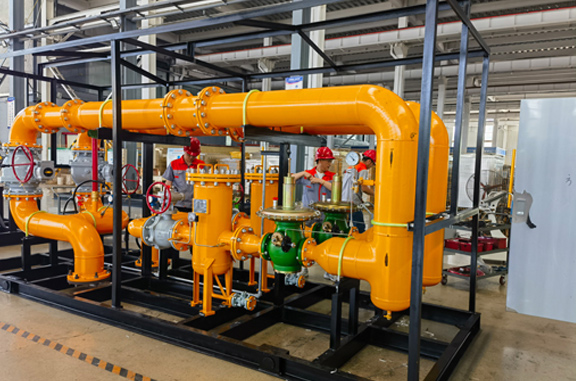
7 月 . 20, 2024 10:51
Back to list
Understanding the Importance and Functionality of Gas Safety Valves for Secure Operations
Understanding Gas Safety Valves Importance and Functionality
Gas safety valves play a crucial role in ensuring the safe operation of gas systems in various applications, from residential furnaces to industrial gas pipelines. These specialized valves are designed to prevent dangerous gas leaks and maintain safe working conditions, safeguarding both human life and property.
At their core, gas safety valves act as critical components in the gas supply system. Their primary function is to automatically shut off the flow of gas when certain unsafe conditions are detected. This could be a result of excessive pressure in the system, an abrupt increase in temperature, or mechanical failure within the gas delivery infrastructure. By terminating the gas flow swiftly, these valves mitigate the risk of explosions and fires, which can occur when gas accumulates in an enclosed space.
There are several types of gas safety valves, each tailored to specific applications and safety requirements
. One common type is the pressure relief valve, which is designed to release excess gas pressure within the system to prevent over-pressurization. This type of valve is often used in conjunction with pressure regulators, ensuring that gas pressures remain within safe limits.Another important type is the automatic shut-off valve, which is triggered by electronic sensors or mechanical components that detect unsafe conditions. For example, if a gas leak is identified, the valve will close immediately, reducing the potential for harmful exposure or catastrophic incidents. These valves can be integrated into more extensive gas monitoring systems, providing real-time data and alerts to system operators.
gas safety valve

The selection and installation of gas safety valves must adhere to strict regulatory standards and codes. In many countries, building codes dictate the type and rating of valves required for different applications, ensuring that they can handle the specific pressures and flow rates associated with the gas systems being utilized. Proper installation is just as critical; any misalignment or improper setup can result in valve malfunction, negating their safety benefits.
Regular maintenance and testing of gas safety valves are essential to ensure their functionality. Industry best practices recommend routine inspections and testing under simulated conditions to verify that the valves respond correctly to potential hazards. This proactive approach not only enhances safety but also extends the lifespan of the valves and the overall gas system.
Education and training also play vital roles in promoting gas safety. Workers who handle gas systems must be knowledgeable about the function and importance of safety valves. They should understand how to operate the valves, recognize signs of malfunction, and respond appropriately in emergencies. This knowledge can be the difference between averting a disaster and facing a severe incident.
In conclusion, gas safety valves are an indispensable aspect of gas system operations. Their ability to prevent gas leaks and manage system pressure significantly contributes to overall safety in both residential and industrial settings. As technology advances, we may see further innovations in valve design and functionality, enhancing their responsiveness and reliability. Ultimately, the ongoing commitment to safety in the gas industry ensures that these critical components continue to protect lives and property from the hazards associated with gas systems.
Latest news
-
Unlocking The Quality Gas Pressure ReducersNewsNov.01,2024
-
The Role of Gas Pressure Reducing StationsNewsNov.01,2024
-
The Importance and Functionality of Safety Relief ValvesNewsNov.01,2024
-
The Essential Role of Safety Valves in Natural Gas ApplicationsNewsNov.01,2024
-
The Essential Role of Gas Pressure RegulatorsNewsNov.01,2024
-
Enhance Your Premium Gas FiltersNewsNov.01,2024

